03 Oct Microsoft’s Enterprise Agreement price shift in 2025
From 1 November 2025, Microsoft will introduce a new, simplified pricing approach for Online Services contracts. Customers on Enterprise Agreements (EAs), MPSA, and OSPA contracts will all transition to a single, standardised model that mirrors the prices publicly available on Microsoft.com.
For IT leaders, this represents more than a simple pricing update. It signals a fundamental shift in how organisations will be able to plan, manage, and budget for their Microsoft investments. For many, corporate decision‑making has often been shaped by the advantages of volume‑based discounts, and the removal of those benefits requires a fresh perspective.
This moment creates an opportunity not just to look at licensing costs, but to step back and consider whether the EA model continues to be the right fit or if the flexibility of the Cloud Solution Provider (CSP) route is a better path forward. At Care Computers, our role is to guide organisations through this shift, providing clarity, insight, and proactive planning to ensure businesses remain in control of their budgets and strategies during this transition.
The key changes every IT decision maker should understand
Currently, organisations on EAs and MPSAs benefit from price levels or tiers, where discounts scale according to the number of users. This has allowed larger businesses to secure significant savings, with price level B, C, or D agreements offering meaningful reductions compared to smaller deployments. Beginning in November 2025, these tiers will be eliminated, and all Online Services licences will be aligned to what Microsoft currently defines as Level A pricing. That level is consistent with the list price publicly available on Microsoft.com, creating a single reference point for all customers.
Another factor to consider is timing. The update doesn’t immediately apply to all customers on 1 November 2025. Instead, it comes into effect at the next contract renewal, or when a new service, not already appearing on your existing price sheet, is added. This introduces a degree of variation, where some organisations may feel the effects earlier than others. While that staggered rollout provides breathing space in some cases, it should not be mistaken for a grace period. Proactive planning well ahead of renewal will ensure that businesses are not caught off guard when the changes do become active.
What this means for your next renewal strategy
Industry estimates suggest that many organisations could experience pricing increases in the range of 6–12%, though the exact figure will depend on factors such as seat counts, current discounts, and the particular workloads in use. Larger organisations, which have traditionally benefitted most from deep volume‑based discounts, are likely to face the most noticeable financial shifts.
That said, there are positives within this change. One of the enduring frustrations for IT leaders managing EAs has been the complexity of discount bands and price levels. Simplifying this structure to a single, transparent baseline price makes cost forecasting more straightforward and offers greater alignment with what businesses see in public pricing resources. This improved transparency should make licensing discussions with finance teams more efficient, removing the need to untangle complicated discount frameworks each time budgets are reviewed.
However, transparency does not equal reduced importance. In fact, because discounts are no longer available, the onus now falls on businesses to make every licence count. The core challenge becomes maximising value from existing entitlements and ensuring that investment decisions are driven by accurate data around current use, efficiency gaps, and future demand. Without this precision, costs are likely to creep higher at renewal and erode budgets that IT leaders have carefully built around their wider priorities.

Enterprise Agreement or CSP: Finding the right fit for your business
For some organisations, renewing under an EA may remain the most logical course of action. EAs still offer stability with long‑term commitments that lock in predictable pricing and provide certainty for multi‑year planning. This will appeal to certain businesses, particularly those valuing continuity above flexibility.
However, the alignment of EA and CSP pricing now changes the decision dynamics. The CSP model offers unique advantages: monthly or annual adjustment options, scalability without contractual penalties, and simplified, consolidated billing that aligns more closely with the fluctuating demands of modern IT environments. For example, organisations with seasonal peaks in activity or those with rapidly evolving workforce patterns can adjust licensing as needed, paying only for what is actually required. This agility reduces waste and keeps budgets more aligned with real‑world requirements rather than anticipated forecasts.
It’s no longer a choice based purely on cost comparison. The critical question is strategic: which contract type better empowers your business goals? If agility and responsiveness are vital, CSP’s flexibility may give you greater control. If predictability and long‑term certainty outweigh those considerations, EA could still be the right fit. At Care Computers, we view this decision as part of a bigger conversation around digital transformation, operational efficiency, and IT’s role in enabling organisational performance.
How Care Computers can guide you through the shift
At Care Computers, we believe licensing decisions should bring value far beyond compliance and cost management. They must actively support your wider objectives, ensuring IT investment delivers measurable benefit across the business. That is why we approach this 2025 change as more than just a pricing update, it’s a chance to strategically align your licensing path to your growth, efficiency, and agility goals.
Our consultancy services are designed to provide practical support at every stage:
- Detailed licence assessments, giving you visibility into how licences are actually being used, which ones are underutilised, and where savings can be unlocked.
- Optimisation strategies that identify areas for greater efficiency, ensuring that spend is tightly managed and every seat adds genuine value.
- Forward‑looking EA renewal roadmaps tailored to your business priorities, helping you enter negotiations with clarity and confidence.
- Structured CSP migration planning, covering the entire process from tenant reviews and licence consolidation to long‑term governance and adoption.
Beyond contractual considerations, our expertise extends to helping customers embed Microsoft technologies more effectively across security, compliance, service management, and cloud productivity. By working holistically across these areas, we ensure that your Microsoft investment is not only well‑priced, but also well‑adopted and delivering tangible business improvements.
Start planning today to stay in control
Microsoft’s new pricing model brings a welcome level of clarity but removes the traditional levers of negotiation that many organisations have historically relied upon. For IT leaders, the true differentiator going forward will be how effectively you evaluate options, plan for usage, and align your licensing decision with your organisation’s long‑term needs.
The most important step you can take is to act now, before renewal cycles bring this change to your door. Reviewing your current EA today, analysing how your licences are currently deployed, and understanding whether CSP flexibility could deliver greater control ensures your business won’t face uncertainty when 2025 arrives.
Care Computers is here to support you in that process. Our team works alongside yours as trusted advisors with deep licensing expertise and a caring, partner‑centred approach. We ensure your licensing strategy isn’t just about ticking a compliance box, but enabling your business to remain efficient, resilient, and set up for growth.
Contact us today to explore your next move. We’ll help you prepare a clear, proactive strategy so that whether you remain with EA or transition to CSP, your Microsoft licensing is positioned to deliver the very best value for your organisation.
Disclaimer: The 6–12% price increase figures are based on external industry projections. Actual financial impact may vary depending on your organisation’s size, workloads, and licensing model.
 Remote Support
Remote Support

